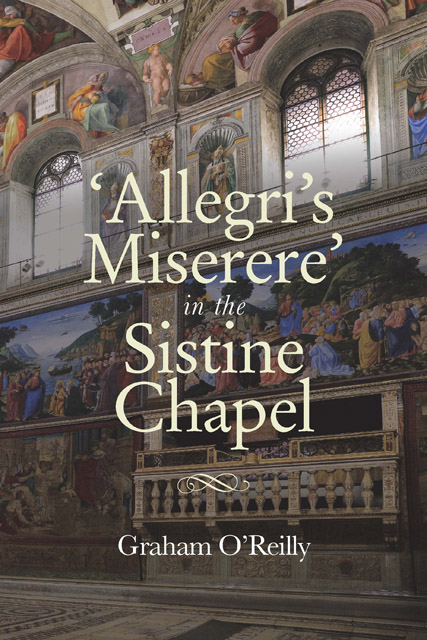Book contents
- Frontmatter
- Contents
- List of illustrations
- List of tables
- List of music examples
- Acknowledgments
- Note on the text
- Introduction: myth and reality
- Part One The Sixteenth and Seventeenth Centuries
- Part Two The Eighteenth Century
- Part Three The Nineteenth Century
- Part Four Performing the Miserere in the Twentieth Century
- Part Five Appendices, Editions and Notes
- List of appendices
- Bibliography
- Index
5 - Eighteenth-century sources 1 – Blainville and Mozart
Published online by Cambridge University Press: 13 January 2023
- Frontmatter
- Contents
- List of illustrations
- List of tables
- List of music examples
- Acknowledgments
- Note on the text
- Introduction: myth and reality
- Part One The Sixteenth and Seventeenth Centuries
- Part Two The Eighteenth Century
- Part Three The Nineteenth Century
- Part Four Performing the Miserere in the Twentieth Century
- Part Five Appendices, Editions and Notes
- List of appendices
- Bibliography
- Index
Summary
Is it possible to know more precisely what listeners heard in the Sistine Chapel during performances of the Miserere in the eighteenth and nineteenth centuries? As we have seen in Chapter 3, vocal ornamentation was almost certainly added from the very first performance, and the most important phrase – that which occurs at the end of the first half of the four-part verses – must have been largely fixed at the latest by 1711, when Bai wrote his Miserere around it. But no written trace of those decorations has yet been found from earlier than 1767, when Charles-Henri de Blainville published his Histoire Générale, Critique et Philologique de la Musique in Paris.
Blainville (1767)
Blainville (1711–69) was a composer and theorist who attracted some fleeting attention with his ‘discovery’ of a mode mixte – neither major nor minor. His Histoire includes sections on the music of the ancient Greeks, Romans, Moors and Turks, similar in many ways to that recently published by Padre Martini in his Storia della Musica (1757), but his main interest was clearly the harmony of his time. He seems to have been part of ongoing exchanges about music theory (especially concerning Rameau’s Traité de l’Harmonie) involving such figures as La Borde, D’Alembert and Rousseau in France, and Padre Martini, Vallotti and Tartini in Italy. The Histoire includes a lengthy supplement discussing theories by the latter. Most of the musical examples (sixty-one pages of plates) are either pictures of exotic instruments or harmonic examples. There are just five extracts of composed music, such as Martini would provide in the two volumes of his famous Esemplare, o sia Saggio fondamentale pratico di contrappunto (1774 and 1776), and only one is identified – two verses of Allegri’s Miserere, found on plates XXII–XXIII (hereinafter B). It follows a series of short phrases in two, three and four parts, in a quasi-falsobordone style, under the heading ‘Differentes issues [sic] de L’harmonie du Contrepoint’. This is presumably what Blainville describes in the text (p. 74) thus: ‘Simple counterpoint is note-against-note, and is properly called fauxbourdon in psalms, as I mentioned above.’ The Allegri is presented as another example of the same.
- Type
- Chapter
- Information
- Allegri's Miserere in the Sistine Chapel , pp. 71 - 76Publisher: Boydell & BrewerPrint publication year: 2020



